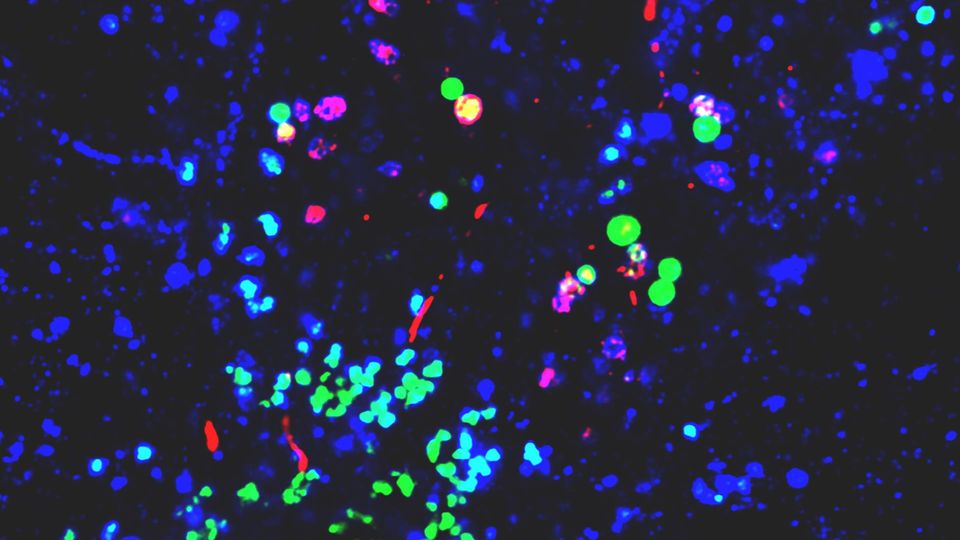Nanoplastics Create an Environment for Parkinson’s To Develop, Study Suggests
A novel study sounds the alarm on the need for a new area of research.

Complete the form below to unlock access to ALL audio articles.
The way in which nanoplastics and a specific brain protein, α-synuclein, interact could create changes in the body that give rise to Parkinson’s disease (PD) and other related dementias, a new study suggests.
Led by a research team from Duke University and published in the journal Science Advances, the new study looked at how the accumulation of the α-synuclein protein was affected by the presence of polystyrene nanoplastics in three different model environments.
While questions remain as to how this protein might interact with nanoplastic particles in the human body, this study suggests that such particles could be a potential risk for the development of PD and associated diseases.
The potential harms of nanoplastics
The increasing concentration of microplastics and nanoplastic particles in the environment is of great concern. In recent years, studies have detected the presence of microplastics and nanoplastics in human blood samples, with subsequent research on mice suggesting that nanoplastics might even be able to penetrate across the blood-brain barrier.
With these findings in mind, researchers are keen to learn more about the impact that such environmental factors might be having on human biology.
“Parkinson’s disease has been called the fastest growing neurological disorder in the world,” said principal investigator Andrew West, in a statement. West is a professor in the department of pharmacology and cancer biology at Duke University School of Medicine. “Numerous lines of data suggest environmental factors might play a prominent role in Parkinson’s disease, but such factors have for the most part not been identified.”
PD and other related conditions are characterized pathologically by the accumulation of the α-synuclein protein within vulnerable neurons in the brain. To explore whether plastic nanoparticles might be a potential factor of interest in the development of PD, West and his colleagues began to investigate the nature of any interactions that could exist between these plastics and the α-synuclein protein.
Nanoplastics affect the accumulation of key brain protein in mouse models
The researchers used nanoparticles of polystyrene – a plastic that is commonly used for disposable drinking cups and other single-use products – measuring less than 1 micrometer in length for this study. These nanoparticles were exposed to the α-synuclein protein in three different environments, with the researchers analyzing how the two behaved. This included a test tube study, a study of cultured neurons and finally a study using a mouse model of PD.
They found that the nanoplastics can form very tight bonds with human wild-type α-synuclein, which promotes the aggregation of α-synuclein proteins. Both the nanoplastic particles and α-synuclein were found to enter neurons through a largely clathrin-dependent endocytosis process, where they congregated in the lysosome.
Once inside neurons, the researchers say that the nanoplastics cause a mild lysosomal impairment that slows the degradation of the aggregated α-synuclein. In this manner, the nanoplastics could be promoting an environment that might play a role in PD risk and disease progression.
“Our study suggests that the emergence of micro and nanoplastics in the environment might represent a new toxin challenge with respect to Parkinson’s disease risk and progression,” West said. “This is especially concerning given the predicted increase in concentrations of these contaminants in our water and food supplies.”
What does this mean for humans?
These plastic-protein accumulations were seen in all three experimental models conducted by the researchers, including the mouse model of PD. However, the researchers caution that more research is still needed to determine whether the same interactions might happen in the human brain and whether the type of nanoplastic exposure could affect these interactions.
“While microplastic and nanoplastic contaminants are being closely evaluated for their potential impact in cancer and autoimmune diseases, the striking nature of the interactions we could observe in our models suggest a need for evaluating increasing nanoplastic contaminants on Parkinson’s disease and dementia risk and progression,” West said.
“The technology needed to monitor nanoplastics is still at the earliest possible stages and not ready yet to answer all the questions we have,” he continued. “But hopefully efforts in this area will increase rapidly, as we see what these particles can do in our models. If we know what to look out for, we can take the necessary steps to protect ourselves, without compromising all the benefits we reap every day from plastics.”
Reference: Liu Z, Sokratian A, Duda AM, et al. Anionic nanoplastic contaminants promote Parkinson’s disease-associated α-synuclein aggregation. Sci Adv. 2023. doi: 10.1126/sciadv.adi8716




